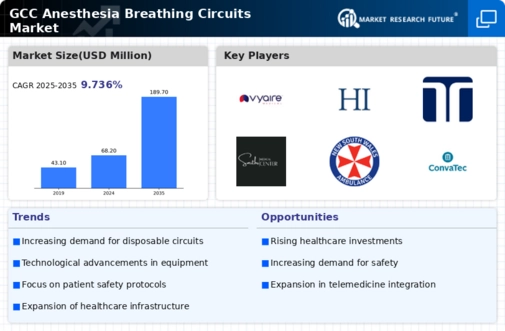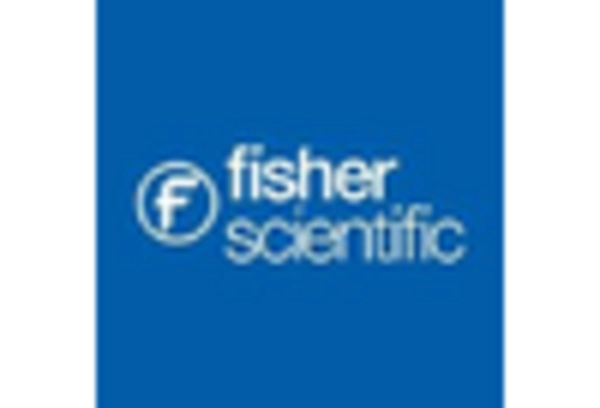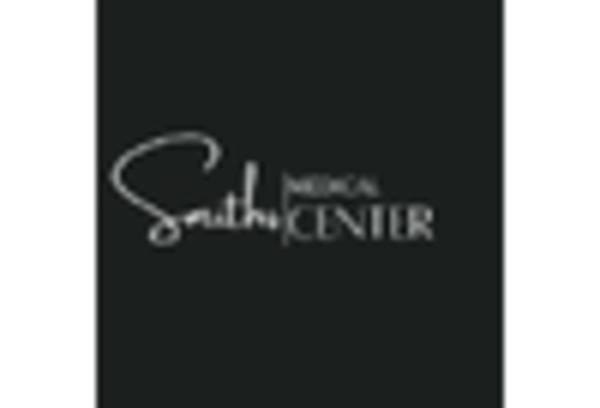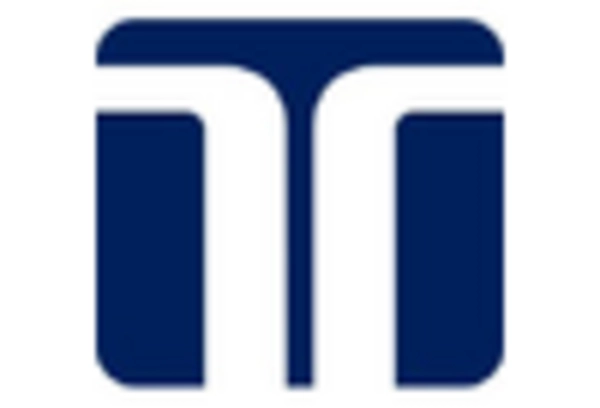Rising Surgical Procedures
The increase in surgical procedures across the GCC region is a primary driver for the anesthesia breathing-circuits market. As healthcare facilities expand and modernize, the demand for effective anesthesia management systems rises. In 2025, the number of surgical procedures is projected to grow by approximately 5% annually, leading to a heightened need for reliable breathing circuits. This trend is particularly evident in countries like Saudi Arabia and the UAE, where investments in healthcare infrastructure are substantial. The anesthesia breathing-circuits market is likely to benefit from this surge, as hospitals and surgical centers seek to enhance patient safety and operational efficiency. Furthermore, the growing prevalence of chronic diseases necessitates more surgical interventions, further propelling the demand for advanced anesthesia solutions.
Expansion of Healthcare Facilities
The expansion of healthcare facilities across the GCC region is a significant driver for the anesthesia breathing-circuits market. With governments investing heavily in healthcare infrastructure, new hospitals and surgical centers are being established, leading to an increased demand for anesthesia equipment. In 2025, the GCC healthcare market is expected to grow by 8%, with a substantial portion allocated to surgical services. This expansion creates opportunities for the anesthesia breathing-circuits market, as healthcare providers seek to equip their facilities with the latest technology. Additionally, the rise in medical tourism in the region further fuels the need for advanced anesthesia solutions, as international patients seek high-quality surgical care. As a result, manufacturers may find a favorable environment for growth and innovation in this expanding market.
Growing Awareness of Patient Safety
The increasing emphasis on patient safety within healthcare systems is a crucial driver for the anesthesia breathing-circuits market. As healthcare providers in the GCC prioritize quality care, the demand for high-quality, reliable anesthesia equipment rises. In 2025, it is estimated that around 70% of healthcare facilities will implement stringent safety protocols, directly impacting the procurement of anesthesia supplies. This trend indicates a shift towards disposable and single-use products, which are perceived as safer options. The anesthesia breathing-circuits market is likely to see a corresponding increase in demand for products that minimize infection risks and enhance patient safety. Consequently, manufacturers may focus on developing innovative solutions that align with these safety standards, ensuring compliance with regulatory requirements and improving overall patient care.
Technological Innovations in Anesthesia
Technological advancements in anesthesia delivery systems are significantly influencing the anesthesia breathing-circuits market. Innovations such as integrated monitoring systems and smart breathing circuits enhance the safety and efficacy of anesthesia administration. In the GCC, the market is witnessing a shift towards more sophisticated equipment, with a projected growth rate of 6% in the adoption of advanced anesthesia technologies. These innovations not only improve patient outcomes but also streamline workflows in operating rooms. The anesthesia breathing-circuits market is poised to capitalize on these developments, as healthcare providers increasingly prioritize technology that ensures precision and reliability in anesthesia delivery. As a result, manufacturers are likely to invest in research and development to create cutting-edge products that meet the evolving needs of healthcare professionals.
Regulatory Support for Healthcare Innovations
Regulatory support for healthcare innovations is emerging as a vital driver for the anesthesia breathing-circuits market. In the GCC, regulatory bodies are increasingly promoting the adoption of advanced medical technologies to enhance patient care. This support is reflected in streamlined approval processes for new anesthesia products, which encourages manufacturers to invest in research and development. In 2025, it is anticipated that regulatory frameworks will become more conducive to innovation, potentially increasing the market size by 10%. The anesthesia breathing-circuits market stands to benefit from this trend, as companies are likely to introduce novel products that comply with evolving regulations. This regulatory environment not only fosters competition but also ensures that healthcare providers have access to the latest and safest anesthesia solutions, ultimately improving patient outcomes.

















Leave a Comment